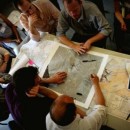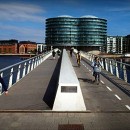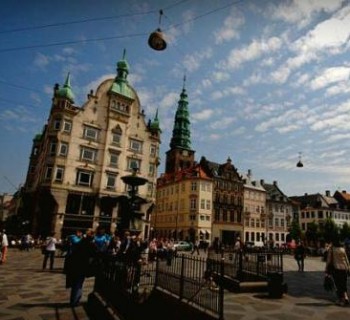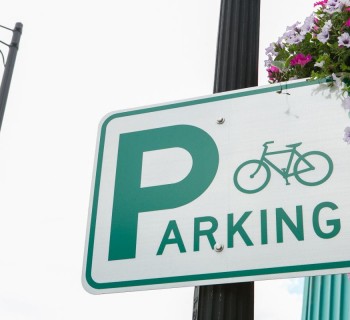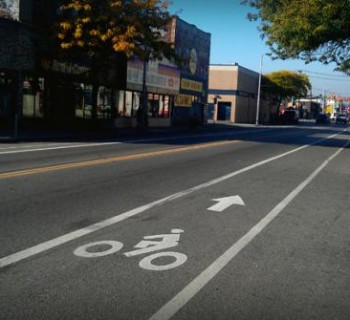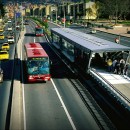DETROIT—On Tuesday evening, the Southeast Michigan Council of Governments hosted its second public meeting on walking and biking paths and infrastructure in Detroit. Roughly 20 participants were present, representing planners, advocates, the disability community, interested residents, downtown businesses, and transportation officials.
Brian Pawlik, planner at SEMCOG, kicked off the meeting describing the goals of the process, then attendees were free to roam and visit maps of Detroit to fill in any gaps of information about existing and proposed non-motorized facilities (e.g., bike lanes, sharrows, and/or greenways).
Mode Shift staff spoke with three attendees to learn exactly what brought them to the meeting, and what they hoped to get out of it.
Lloyd Shelton came to the meeting as a voice for the disabled community. Shelton spent his early life in Detroit, but mostly grew up outside the city in Pontiac and his current hometown of Ann Arbor. He feels certain that had he spent his entire life in Detroit, he would not have had many of the opportunities that he has had living elsewhere, particularly in accessing education, employment and social activities.
Shelton uses a wheelchair, and is a frequent user of The Ride, the bus service operated by the Ann Arbor Transportation Authority. He noted that Ann Arbor does a much better job with curb cuts and traffic crossings than most other cities in the region.
Shelton strives to be an advocate within his own and other communities, serving as a City Commissioner in Ann Arbor and pursuing his Masters Degree in Social Work. “I came here today to get more informed and learn how policy is shaped,” he said.
Grosse Pointe resident, Stephen Lambers, used one of the maps to plot his vision for a Grosse Point Park-to-Midtown connector along Charlevoix. He calls it “The Sweetway Complete Street,” as it passes the former residence of Ossian Sweet, an African American physician acquitted of murder after a mob uprising at his home in 1925.
The seven-mile route would pass through the Chrysler North Jefferson Assembly Plant between Conner and St. Jean, and provide an additional connection to the Connor Creek Greenway.
Our staff also spoke with Jason Zogg, a Challenge Detroit Fellow working with DTE on urban innovation initiatives. He attended the meeting for both personal and professional reasons.
Zogg recently started a blog called Carfree in Detroit to document his experience in the city after having lost access to the car he’s been using since moving here. Having lived in Boston and Rhode Island for the six years prior to coming to Detroit, Zogg was used to living without a car.
He cites two main factors that make it difficult to go carfree in Detroit: a lack of bike and pedestrian infrastructure, and few or no Zipcars within walking distance of his home or primary destinations.
As it relates to his work as a Fellow, Zogg sees an opportunity for the nearly 3,500 employees at DTE’s Detroit office and other major employers nearby (e.g., AT&T, Detroit Public Safety Headquarters, etc.) to get out of the office, walk to lunch, enjoy the outdoors, and engage with the city.
"DTE is actively looking for ways to revitalize its campus and surrounding area, primarily focusing on walkability," Zogg says.
This winter will bring a second round of public meetings before SEMCOG’s final plan is released in the Spring of 2014.
Stay tuned for an online bike user survey for broader public input, and be sure to attend your local SEMCOG meeting to have your voice heard.



